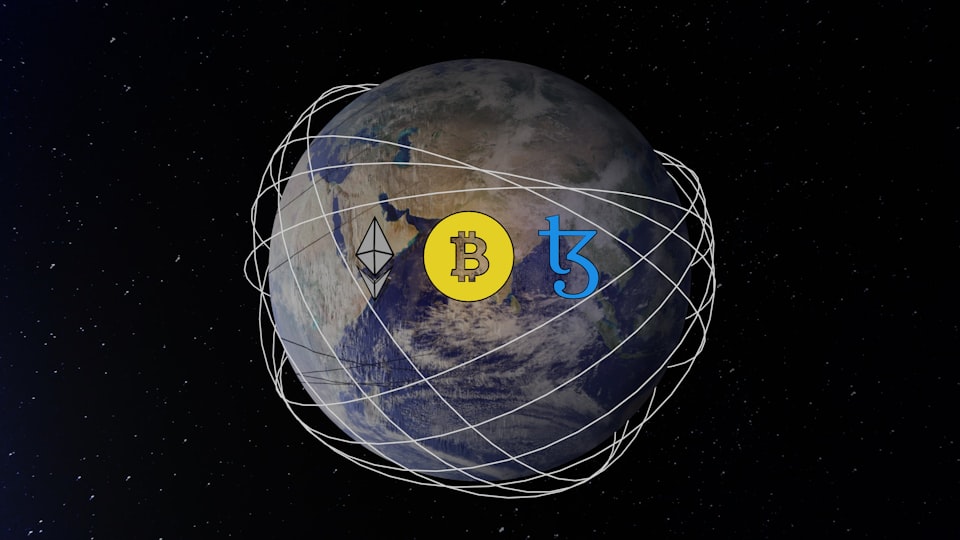Web3 Explained: The Future of Decentralized Internet
Web3 promises to revolutionize the internet by decentralizing power and control from a few tech giants to a distributed network of users. By leveraging blockchain technology, Web3 aims to address some of the major challenges of the current web infrastructure

The internet has come a long way since its inception, revolutionizing the way we communicate, access information, and conduct business. However, the current web infrastructure, often referred to as Web2, is largely controlled by a handful of tech giants, raising concerns about data privacy, censorship, and centralized control. Enter Web3, a vision for a decentralized internet built on blockchain technology, promising to reshape the digital landscape and empower users like never before.
What is Web3?
Web3 is a term coined by Gavin Wood, co-founder of Ethereum, to describe the next iteration of the internet powered by decentralized technologies such as blockchain, cryptocurrencies, and decentralized applications (dApps). It aims to create a more open, transparent, and trustless internet ecosystem, where users have complete control over their data and digital assets.
The Blockchain Backbone
The Decentralized Foundation
Blockchain technology lies at the heart of Web3, providing a decentralized and secure infrastructure for various applications and services. Unlike traditional centralized systems, blockchains operate on a distributed network of nodes, eliminating the need for a central authority or intermediaries.
By leveraging cryptographic principles and consensus mechanisms, blockchains ensure data integrity, transparency, and immutability. This makes them an ideal foundation for building decentralized applications and facilitating peer-to-peer transactions without the need for trusted third parties.
Ethereum, the second-largest blockchain after Bitcoin, has emerged as a leading platform for Web3 development, thanks to its smart contract capabilities and thriving ecosystem of developers and projects.
Web3 Building Blocks
Cryptocurrencies and DeFi
Cryptocurrencies, such as Bitcoin and Ether, are the digital currencies powering Web3 ecosystems. They enable secure, borderless, and censorship-resistant transactions, unlocking new possibilities for financial inclusion and economic empowerment.
Decentralized Finance (DeFi) is a rapidly growing sector within Web3, aiming to create a decentralized and accessible financial system built on blockchain technology. DeFi applications, such as decentralized exchanges (Uniswap), lending platforms (Compound), and stablecoins (Dai), provide users with greater control over their assets and access to various financial services without intermediaries.
Non-Fungible Tokens (NFTs)
NFTs are unique digital assets that represent ownership of virtual or physical items, such as artwork, collectibles, or even real estate. They are built on blockchain technology and cannot be replicated or interchanged, making them ideal for digital scarcity and provenance.
The NFT market has exploded in recent years, with platforms like OpenSea and CryptoPunks enabling the creation, trade, and collection of these digital assets. NFTs have found applications in various industries, from art and gaming to real estate and supply chain management.
Decentralized Applications (dApps)
Decentralized applications (dApps) are the backbone of Web3, enabling users to interact with blockchain-based services and platforms. Unlike traditional web applications, dApps operate on decentralized networks, ensuring transparency, censorship resistance, and resilience to single points of failure.
Popular dApps include decentralized social media platforms (Minds), decentralized storage solutions (Filecoin), and decentralized marketplaces (OpenBazaar). These applications leverage blockchain technology to provide users with greater control over their data, privacy, and digital assets.
The Metaverse and Web3
Bridging the Physical and Digital Worlds
The metaverse, a convergence of virtual and augmented reality, has emerged as a compelling use case for Web3 technologies. By leveraging blockchain, NFTs, and decentralized identities, Web3 aims to create an interoperable and user-controlled metaverse, where individuals can own and trade digital assets, engage in virtual economies, and participate in decentralized governance.
Projects like Decentraland and The Sandbox are pioneering the development of decentralized virtual worlds, where users can buy and own virtual land, build immersive experiences, and engage in various activities using cryptocurrencies and NFTs.
Benefits and Challenges of Web3
Empowering Users and Democratizing the Internet
Web3 promises to revolutionize the internet by decentralizing power and control from a few tech giants to a distributed network of users. By leveraging blockchain technology, Web3 aims to address some of the major challenges of the current web infrastructure, including:
- Data Privacy and Ownership: Web3 empowers users to own and control their personal data, eliminating the need for centralized data silos and minimizing the risk of data breaches and misuse.
- Censorship Resistance: With no central authority controlling the network, Web3 applications and services are resistant to censorship, ensuring free speech and open access to information.
- Trustless and Transparent Interactions: Blockchain-based transactions and smart contracts enable trustless and transparent interactions, reducing the need for intermediaries and facilitating secure peer-to-peer transactions.
- Accessibility and Financial Inclusion: Decentralized finance (DeFi) and cryptocurrencies provide greater access to financial services, particularly for the unbanked and underbanked populations.
- Ownership and Monetization of Digital Assets: NFTs enable the ownership and monetization of unique digital assets, unlocking new revenue streams and business models for creators and artists.
However, Web3 also faces significant challenges, including scalability issues, regulatory uncertainties, user adoption barriers, and the need for robust governance models to ensure the long-term sustainability and decentralization of these ecosystems.
The Road Ahead
Shaping the Future of the Internet
While Web3 is still in its early stages, its potential to reshape the internet and empower users is undeniable. As the technology matures and adoption increases, we can expect to see more innovative applications and use cases emerge, ranging from decentralized social media platforms to decentralized autonomous organizations (DAOs) and beyond.
Collaboration between developers, entrepreneurs, and policymakers will be crucial in overcoming the challenges and realizing the full potential of Web3. By fostering a thriving ecosystem and embracing the principles of decentralization, transparency, and user empowerment, Web3 could pave the way for a more equitable, resilient, and innovative digital future.
Conclusion
Web3 represents a paradigm shift in how we perceive and interact with the internet. By leveraging blockchain technology and decentralized architectures, Web3 aims to create a more open, transparent, and user-centric internet ecosystem. From cryptocurrencies and DeFi to NFTs and the metaverse, Web3 applications are disrupting various industries and challenging traditional business models.
While the journey toward a fully decentralized internet is not without its challenges, the potential benefits of Web3 – increased privacy, censorship resistance, and user empowerment – make it a compelling vision for the future. As the technology continues to evolve and gain mainstream adoption, Web3 could reshape the digital landscape and usher in a new era of decentralized innovation and collaboration.
The information provided in this article is for educational and informational purposes only and should not be construed as financial advice. Readers are advised to conduct their own research and consult with a qualified financial advisor before making any investment decisions.




